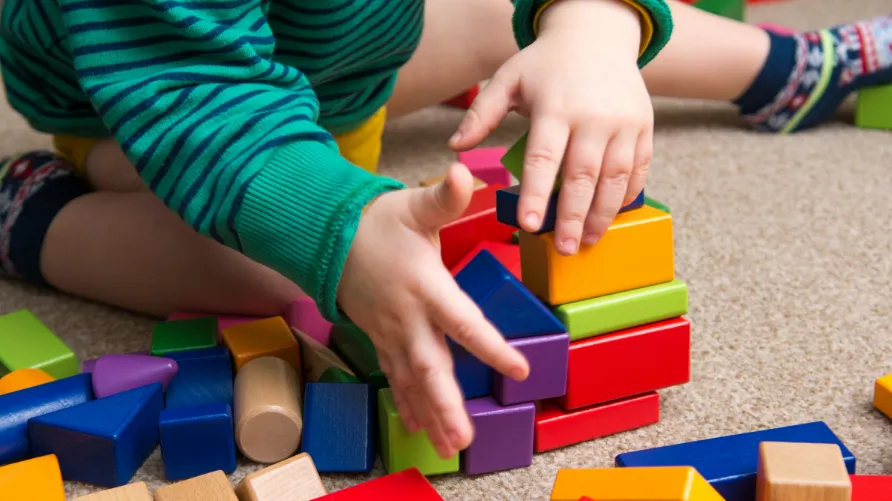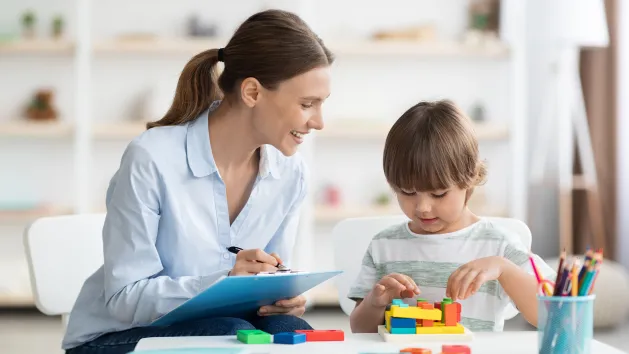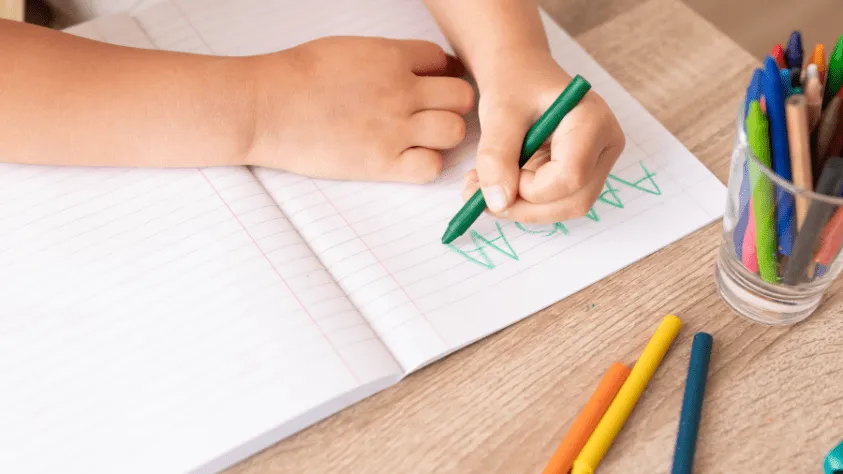
ADHD children: how to support them at school?

Attention Deficit Disorder with or without Hyperactivity (ADHD) is often associated with difficulties at school. Inattention, impulsivity, hyperactivity… these telltale signs of ADHD can interfere with children’s learning and school results. Are you a parent, teacher or remedial professional looking for solutions? Once again, Babaoo Mag has the facts for you! 💡
Understanding the academic challenges faced by ADHD children
Without the necessary support, children with ADHD can experience intense frustration or exhaustion when faced with the fast pace of the school system. Their racing brains and constantly racing minds make them more susceptible to distractions, reduce their ability to stay focused and affect their ability to manage time effectively.
This reality, which is often difficult to manage alone, can lead to feelings of failure and withdrawal. It is therefore essential to understand the specific challenges these children face and to identify support and differentiation strategies to help them overcome these obstacles. 🎯
Inattention and concentration problems
In a classroom that is sometimes noisy (really?! 😅) and full of stimuli, staying focused for a child with Attention Deficit Disorder with or without Hyperactivity can be particularly complicated. Fortunately, adopting a few good reflexes on a daily basis can change everything!
💡 Baba Tip no. 1: Adapt the child’s environment
An appropriate learning environment is essential for every child, and this is all the more true for those with ADHD, who are more easily disturbed by surrounding noise and movement. So putting them in an area of the classroom where visual and auditory distractions are minimal can do a lot to help them stay attentive.
- Choose the front row, close to the teacher.
- Choose a seat away from windows, doors and high-traffic areas.
- Choose a small, quiet and diligent neighbour.
💡 Baba Tip No. 2: Make reasonable accommodations
Children with ADHD can also find it hard to stay put for long periods of time. Mounted on springs, they get restless! When they’re not gesticulating in their chairs, they get up and move around for no apparent reason, risking disrupting the classroom harmony that can be so hard to establish. 🤯
Rest assured, some reasonable arrangements are proving very effective in helping them better manage their constant need to move.
- Offer dynamic positioning options: standing desks, balance balls or Dynair cushions will allow the child to be mobile while remaining engaged in the task at hand.
- Use energy management tools: anti-stress balls, sensory mats and activity bands help to channel some children’s boundless energy and encourage concentration.
- Incorporate motor activities into the learning process: does one of your pupils seem more involved when they’re on the move? Give priority to kinaesthetic activities!
💡 Baba Tip no. 3: Plan short breaks at regular intervals
“Work hard, play hard!” 💪 Children with ADHD are no exception to the rule! What could be better than a short break to allow them to let off steam, recharge their energy and refocus before resuming their activities?! To do this, set up a dedicated area in the classroom where children who need it can recharge their batteries: cushions, yoga mats, books and board games… 5 minutes later, it’s all over!
💡 Baba Tip 4: Encourage self-regulation
Teach children to recognise when they need to calm down or concentrate and to put in place self-regulation techniques that suit them, such as breathing exercises, relaxation or focusing their attention. Understanding how you work is the basis of metacognition.
Task management and organisation
Another major challenge for children with this disorder is task management and organisation. They often struggle to complete a task that has just begun, follow instructions and manage their time effectively.
💡 Baba Tip No. 1: Establish routines and procedures
Just as at home, it’s crucial to help our little charges get better organised in the classroom. To do this, there’s nothing like introducing clear, structured routines and procedures. This helps pupils to anticipate upcoming tasks, smooth the transition from one activity to another and develop their independence. For example, every Monday, the morning ritual could look something like this:
- The pupils line up silently.
- Once they have entered the classroom, they settle in quietly.
- Everyone takes part in the “collective good morning” and shares a brief anecdote about their weekend.
- To help the children wake up, they are invited to take part in an energising activity such as a short stretching session.
- The teacher explains the day’s timetable.
- The children prepare the necessary materials and get out their notebooks.
💡 Baba Tip No. 2: Use visual planning tools.
Clocks, hourglasses, “to-do lists” or pictorial wall planning are all tools that can help children with ADHD to organise their days better thanks to a clear, structured visualisation of the tasks to be carried out.
💡 Baba Tip No. 3: Split up the activities
For once, the not-so-nice “divide and conquer” method should inspire you! By breaking down complex activities into concrete micro-tasks that are easier to pin down, children will have a better grasp of a timetable that can sometimes seem complicated.
Rather than asking them to write a story, suggest that they :
- Make themselves comfortable.
- Take a sheet of paper, a pencil and an eraser.
- Choose the story they want to tell.
- Imagine the story in their heads and outline the story.
- Start writing, following each stage of the imagined story.
- Take intermediate breaks and reread to make sure you haven’t forgotten anything.
Participation in class
Apart from possible problems with concentration and organisation, another difficulty encountered by children with ADHD is their ability to participate actively and productively in class. This is not just limited to their ability to stay focused, but also extends to a variety of other behaviours that can interfere with their learning and that of their classmates.
Often out of step with the pace of the class, they lose track of discussions or instructions, sometimes after only a few minutes. Their attention can easily be diverted by a flying fly, the whisper of a neighbour or their own imagination.
What’s more, their impulsiveness can lead them to interrupt the flow of the class. For example, they might shout out an answer without raising a finger, or ask a question about the stars when the lesson is about reading. Although generally without malicious intent, these interventions can break the concentration of other pupils.
💡 Baba Tip no. 1: Make lessons interactive
Rather than opting for a learning process based on passive listening, introduce a participative classroom dynamic that will make lessons more engaging. Games, manipulatives, interactive stories and all other forms of playful learning are real attention-getters!
- In geometry, for example, use building blocks or puzzles to help them understand shapes and structures.
- In oral expression, read a story aloud and ask them to predict what’s going to happen next.
- In maths, logic games and cooking recipes will be just the thing to anchor the concepts of addition, subtraction or measurement in a tangible and fun way.
💡 Baba Tip 2: Encourage active participation
It’s crucial to highlight the contributions of children with ADHD within the classroom. Brimming with original ideas, their active participation can clearly enrich group discussions.
To channel this creative energy, encourage them to express their thoughts in a structured way. For example, you could ask them to raise a “green hand” when they have an answer to give, and a “red hand” if they have a question to ask. When they respect this rule, don’t forget to congratulate them. In this way, you’ll boost their self-confidence and give them a clear understanding of the importance of respecting rules if they are to live better in society.
Babaoo recap!
- Problems with concentration, organisation and participation in class… Many children with Attention Deficit Disorder with or without Hyperactivity Disorder (ADHD) experience difficulties at school.
- To help them rise to the challenges they face, teachers and remedial professionals need to identify differentiation strategies that will support their learning and well-being at school: a suitable environment, reasonable adjustments, routines, regular breaks and a participative class dynamic are just some of the avenues to be explored.
- Always celebrate their successes, no matter how small, and encourage them to keep progressing.
- Finally, remember that every child is unique, and what works for one may not work for another. As a teacher or remedial professional, it’s by maintaining open communication with the student and their parents that you’ll find the support strategies that will allow them to reveal themselves!
✏ Note: Are you the parent of a child with ADHD and looking for advice on how to improve their day-to-day life at home? Reed this article.
You may also be interested in these articles


